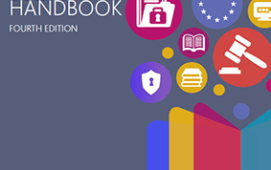
 By Dishang Patel, Fintech & Growth Delivery Partner, Leading Point Financial Markets.
By Dishang Patel, Fintech & Growth Delivery Partner, Leading Point Financial Markets.
The past six months have by no means been a time of status quo. During this period of uncertainty, standards have been questioned and new ‘norms’ have been formed.
A standout development has been the intensified focus on cloud-based services. Levels of adoption have varied, from those moving to cloud for the first time, to others making cloud their only form of storage and access, and with numerous ‘others’ in between.
One area affected adversely (for those who weren’t ready) but positively (for those who were) is software. ‘Old-school’ software vendors – whose multi-million-pound solutions were traditionally implemented on premise at financial institutions, whether as part of a pure ‘buy’ or broader ‘build’ approach – have worked hard to offer cloud-based services.
The broad shift to working from home (WFH) as a result of the Covid-19 pandemic has tested the end-user experience all the way from front to back offices in financial institutions. Security, ease of access and speed are all high on the agenda in the new world in which we find ourselves.
The digitisation journey
With workforces operating globally, it is difficult to guarantee uniform user experiences and be able to cater for a multitude of needs. To achieve success in this area and to ensure a seamless WFH experience, financial institutions have moved things up a level and worked as hard as software providers to offer cloud-based solutions.
All manner of financial institutions (trading firms, brokerages, asset managers, challenger banks) have been on a digitisation journey to make the online user experience more consistent and reliable.
Composable Enterprise is an approach that those who have worked in a front office environment within financial services may have come across and for many could be the way forward.
Composable Enterprise: the way forward
Digitisation can come in many forms: from robotic process automation (RPA), operational excellence, implementation of application-based solution, interoperability and electronification. Interoperability and electronification are two key components of this Composable Enterprise approach.
Interoperability – whether in terms of web services, applications, or both – is an approach that can create efficiencies on the desktop and deliver improved user experience. It has the potential to deliver business performance benefits, in terms of faster and better decision making with the ultimate potential to uncover previously untapped alpha. It also has two important environmental benefits:
1) Reducing energy spend;
2) Less need for old hardware to be disposed of, delivering the reduced environmental footprint that organisations desire.
Electronification, for most industry players, may represent the final step on the full digitisation journey. According to the Oxford English Dictionary, electronification is the “conversion to or adoption of an electronic mode of operation,” which translates to the front office having all the tools they need to do their jobs to the best of their ability.
The beauty of both interoperability and electronification is that they work just as well in a remote set up as they do in an office environment. This is because a good implementation of both results in maximising an organisation’s ability to use all the tools (trading platforms, market data feeds, CRMs, and so on) at their disposal without needing masses of physical infrastructure.
Because of the lower barriers (such as time and cost) of interoperability, financial institutions should start their digitisation journeys from this component and then embark on a larger and more complicated move to electronification.
Composable Enterprise is about firms being able to choose the best component needed for their business, allowing them to be more flexible and more open in order to adapt to new potential revenue opportunities. In these challenging times, it is no surprise that more and more financial institutions are adding Composable Enterprise as a key item on their spending agenda.
Subscribe to our newsletter




